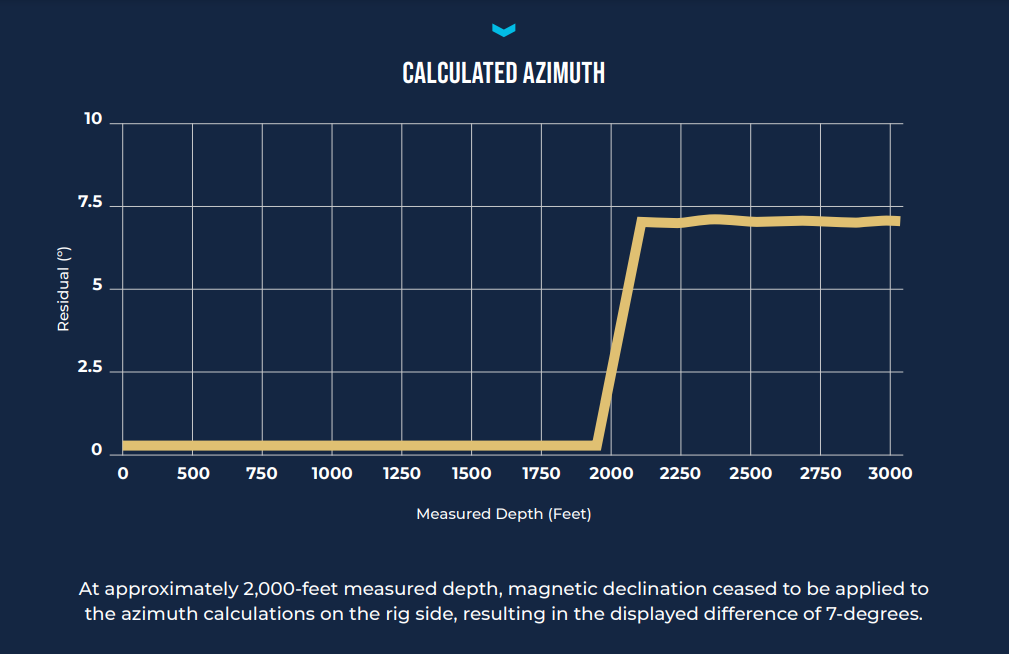H&P Identified a 7 Degree Offset That Could Have Left the Operator 1,000 ft. Off Target
Challenge
An exploration and production company with operations in Oklahoma, Texas and New Mexico was facing the challenge of tight well spacing on a pad in a highly drilled area. They needed a solution that would help ensure accurate survey data for their wells in order to avoid costly and sometimes devastating errors that occur when a well survey is incorrect.
For example, in an area with tight well spacing, inaccurate surveys can lead to costly and dangerous issues, including erroneous wellbore positioning, collisions with existing wells or deviation from the precise property lease line positionings. Inaccurate surveys reported to the state can cause inaccurate regulatory data and can even impact future wells.
Solution
H&P’s Magnetic Variation Services (Survey Management) leads the industry in enhancing the accuracy of directional drilling and wellbore optimization, allowing the customer to operate while facing tight well spacing on the pad in a highly drilled area.
Survey Management
The survey management platform helps operators greatly improve well placement, providing increased production and reduced risk.
Through the application of H&P’s industry leading In-Field Referencing (IFR) magnetic modeling and multi station analysis (MSA) services, wellbore placement uncertainty is reduced by up to 60%.
Applying these services between new wells drilled in congested fields significantly increases the separation factors, which means fewer wells require dispensations, reducing collision risk and improving safety.
Outcome
Halfway through the run, the surface system was swapped out, and the magnetic correction to reference the correct north (Grid North) was not applied.
This resulted in a 7.1-degree offset in azimmuth for the entire tangent that was being held at a 14-degree inclination. This occurred at a point in the well that could only be identified by the on-site measurement-while drilling (MWD).
A deviation of only 7-degrees can create drastic issues in final well positioning, potentially more than 1,000 feet off. Inaccurate well surveys also contribute to faulty error-model calculations, significantly impacting the accuracy of the wellbore’s predetermined ellipse of uncertainty.
By utilizing Survey Management, HPT was able to identify the error by recalculating the MWD surveys and alerted the rig and the operator to make sure the error was corrected, and the bit was realigned on the correct path.

Past performance is not a guarantee of future results. Any statements regarding past performance are not guarantees of future performance and actual results may differ materially. © 07/2021 HPCS012


